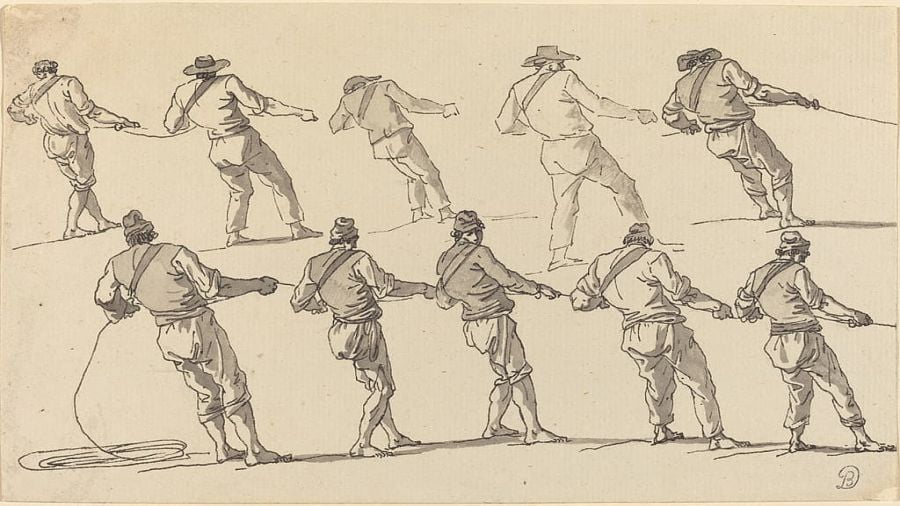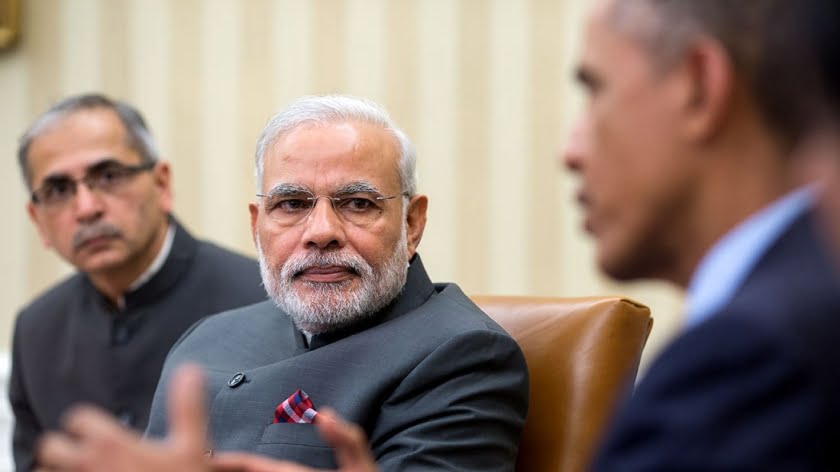Why Soft Power is not Applicable in Russia
From the mid-2000s to the early 2020s, there was a vogue for “soft power” in the Russian community of political scientists and international scholars—numerous articles on the subject were published, dissertations were defended, and representatives of a number of Russian NGOs and foundations eloquently tried to convince that it was they who were engaged in “soft power” issues in order to promote Russia’s interests abroad. One must agree that the term coined by Joseph Nye Jr. was indeed an attractive one. True, he also talked about hard power, smart power, and cyber power. And then there is sharp force (by Christopher Walker) and sticky force (by Walter Russell Mead). And different views on how exactly to apply power to exercise US domination led to polemics between theorists of the said methodologies.
But it is “soft power” that has become popular in Russia. Probably because it was opposed to hard power. And although in 2008 Russia resorted specifically to hard power in South Ossetia, soft power continued to be discussed just as actively.
This approach is generally wrong. Instead of developing its own concepts, strategies and doctrines, Russia has been musing over models that were alien to us. And their analysis did not have enough critical depth to realize the importance of an authentic and sovereign approach to the conduct of international affairs. Because of this, a Russian theory of International Relations has not yet emerged, although attempts by a number of Russian scholars and political scientists have been made for many years.
The fascination with the West is not a trend of recent decades. During the Soviet era, we (alas) also began to use terms and concepts formulated by our ideological opponents. The term “bipolar world,” the “Third World,” and more specific definitions, such as the “Cuban Missile Crisis” are all products of the U.S. presidential administration and the pool of American political scientists serving the White House and the State Department.
The same phenomenon has occurred with soft power. And, having created in their own imagination some model that, theoretically, can influence others, domestic political scientists began to talk about the need to apply it at the global level.
If we take into account that “soft power is more of a figurative generalization than a normatively expressed concept,” this approach could be justified.
However, the initial positions and capabilities of Russia and the United States in this regard are very different from each other.
First, the budget used in the United States for all kinds of psychological operations, cultural and ideological influence, scientific and educational programs, as well as maintaining a staff of its own agents around the world is not comparable to the funds that even under ideal conditions Russia would have for conducting its foreign policy.
The formation of the U.S. soft power apparatus began as early as the 1970s, and it was quite diverse. From USAID, the Peace Corps and organizations like NDI and the Republican Institute, to Saul Alinsky’s network projects and Protestant missionary groups—all of them have been working for decades in different regions of the world, collecting the necessary data and developing unique methods of social engineering (it should be noted that the school of behaviorism, i.e., human behavior management, originated in the United States). The budgets of millions of dollars were allocated, year after year, and mastered by a whole army of scientists, specialists and executors. The best methods that proved themselves in one or another country/region were scaled up at the global level.
Second, soft power does not exist on its own, but only in conjunction with hard power.
While hard power—the ability to coerce—stems from a country’s military or economic strength, soft power arises from the attractiveness of a country’s culture, political ideals and policies. Hard power remains crucial in a world of nations trying to assert their independence. It was at the heart of the Bush Jr. administration’s new national security strategy. But in Nye’s view, the neoconservatives who advised the president made a serious miscalculation—they focused too much on using America’s military might to force other countries to do Washington’s bidding, but paid too little attention to soft power. In Nye’s view, it was soft power that was supposed to prevent terrorists from recruiting supporters from among the moderate majority. And it was soft power that was supposed to help deal with critical global problems that required multilateral cooperation among nations. This is what Nye discussed in his book, which was published in 2004, after the U.S. invasion of Iraq.
Again, the U.S. hard power budget is also dozens of times greater than what Russia has spent on military and defense.
Third, the author (Nye) himself should be more closely scrutinized. With a Ph.D. in philosophy and a member of the American Academy of Arts and Sciences, Joseph Nye, Jr. is by no means a pacifist or a proponent of exclusively controversial diplomacy. From 1977 to 1979, he served as Assistant Under Secretary of State for Security Support, Science and Technology. He was also chairman of the National Security Council panel on nuclear nonproliferation. From 1993 to 1994, he was chairman of the National Intelligence Council, and from 1994 to 1995, he served as U.S. Under Secretary of Defense for International Affairs. Thus, his main experience has been in the security services, and he was a decision-maker. And in 1994, the U.S. military intervention in Haiti took place, in order to return to office President Jean-Bertrand Aristide, who had repeatedly violated the country’s Constitution. Of course, this was done under the guise of “restoring democracy” to improve Bill Clinton’s rating. Interestingly, in 2004, the U.S. itself had already financed Aristide’s overthrow, having created the necessary conditions (both in terms of destroying the country’s economy and creating a controlled opposition). The mentioning of such a change of mood on the part of the US is not accidental, because we are talking about soft power as a kind of political tool. And this period is precisely the time of a series of color revolutions in the post-Soviet space, which the U.S. was behind. Is not this the manifestation of the “soft power” of the professional strongman Joseph Nye? The understanding of this has come to the Russian political science community relatively recently.
By the way, Joseph Nye himself introduced the term “soft power” back in the late 1980s and regularly used it in his works before the book with the same title was published.
For example, in a 1990 work, Bound Lead: The Changing Nature of American Power, he argues for the need to control international processes, albeit not directly, but by asserting its strategic interests. And for this purpose, the U.S. has the necessary resources, which must be properly allocated—one part to maintain military power and the other to skillful diplomacy, which he called “soft power.”
We read: ” The United States has both the traditional hard power resources and the new soft power resources to meet the challenges of transnational interdependence. The critical question is whether it will have the political leadership and strategic vision to convert these power resources into real influence in a transitional period of world politics. The implications for stability in the nuclear era are immense. A strategy for managing the transition to complex interdependence over the next decades will require the United States to invest its resources in the maintenance of the geopolitical balance, in an open attitude to the rest of the world, in the development of new international institutions, and in major reforms to restore the domestic sources of U.S. strength” (pp. 260-261).
There are rather obvious attitudes towards the continuation of the US global dominance. At the time of writing, the USSR was still in existence, but Nye had already warned of the need to invest in new international structures in order to control world processes through them.
Another mistake of Russian political analysts is that they have started to refer to U.S. diplomacy in general as nothing but “soft power.” One can often encounter such expressions as “US soft power in the post-Soviet space,” “US soft power in Central Asia,” etc. etc. It is as if a wide range of instruments of diplomatic influence conducted by the U.S. State Department did not exist before. And all this was long before Joseph Nye invented his term.
According to Nye’s definition, a country’s “soft power” is based on three sources: culture, political values and its foreign policy. Any state has all of these, but their essence and form are different. If the U.S. is based on Protestant religious culture, exclusivity and superiority, with an emphasis on God’s chosenness (the doctrine of Predestination) with a moralizing bias, other countries and peoples have different views on world affairs.
Developing this idea, Olga Leonova rightly notes that “soft power” is formed on the basis of the attractiveness of not only the general culture of a given country, but also its political ideals and traditions. Hence, political culture is meant here. Indeed, when the political course of a given country finds a positive response among its partners, the potential of “soft power” increases. Consequently, the resources of “soft power” include political institutions, political doctrines and concepts expressed in the country’s activities, both at the domestic political level and in the international arena.
But does U.S. foreign policy resonate positively in other countries? Of course, there is a certain correlation between public support and military interventions. For example, after the U.S. invasion of Iraq in March 2003, the U.S. rating plummeted in many countries that were considered allies. Apparently, this worried Joseph Nye, who saw the critical attitude of the vast majority of the world’s peoples toward his country as a threat to the attractiveness in which resources had been invested over the previous decades.
But definitely, the attractiveness of the USA is also related to the welfare of the citizens who live there, and in the 1990s and early 2000s, this country was considered promising for life, work and career. But in recent times, the rising unemployment rate, crime rate and declining quality of life as such in the US leaves much to be desired. Of course, there are very poor countries from where illegal migrants try to get to the US via Mexico, but this is done out of desperation and inflated expectations. It is doubtful that the segment of illegal migrants who are not highly skilled and unable to actively contribute to the U.S. economy can be attributed to the “soft power” effect.
Consequently, there is an illusory component to this model. Just as the picture in Hollywood movies is different from real life in the United States, the culture, political values, and image of U.S. foreign policy itself is distorted by the imagination of those affected by these three components.
If we simplify the comparison of “soft power” of different countries on the basis of these three components, we can say that we have the same name for a culinary dish, but the proportions of ingredients and their quality (as well as the preparation process) will be different; so it makes no sense to give this dish the same name.
Let the US stay with its soft, hard, smart and other powers. They, of course, should be kept in mind, but only analyzed through a critical prism and take into account how they can use these tools against us.
We, on the other hand, need to develop our own concepts, theories, and doctrines based on domestic history, culture, and values, and in accordance with the current political moment.







